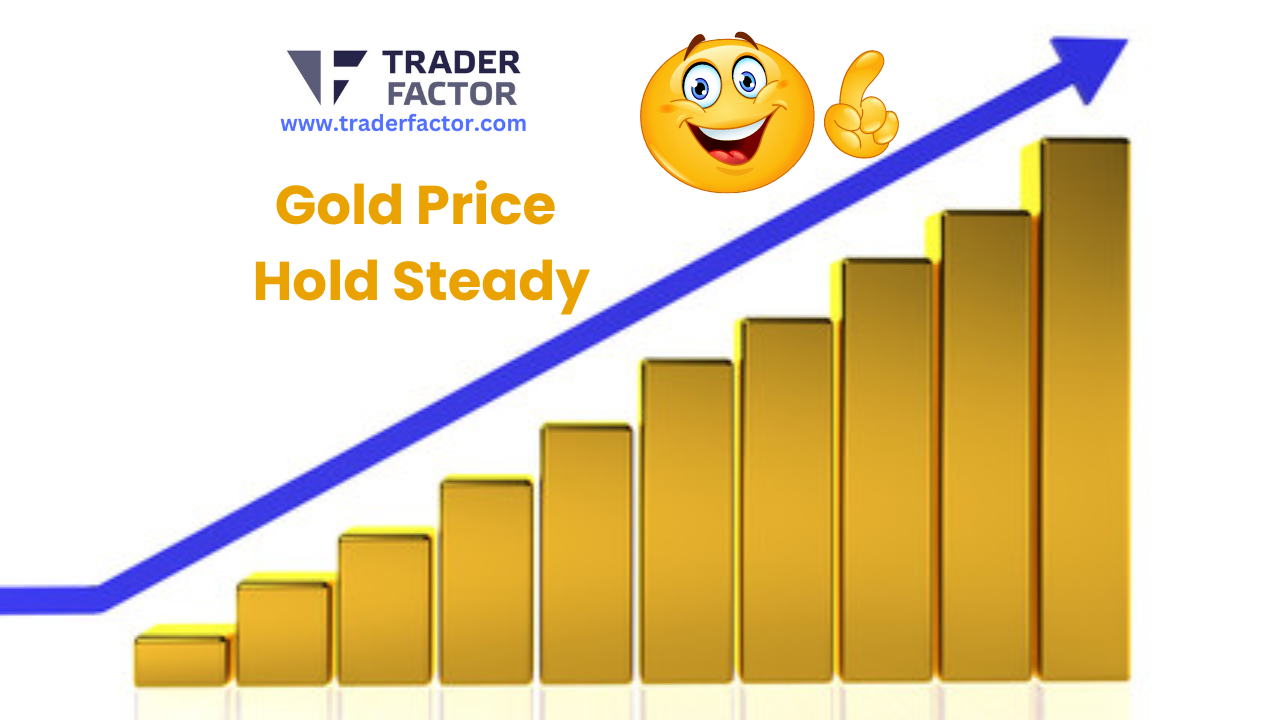Gold prices are demonstrating remarkable stability in the face of deepening conflict in the Middle East, hinting at sustained investor interest in the precious metal as a safe-haven asset. In Thursday’s Asian trading session, the spot price for gold hovers around $2,370 per troy ounce, showing minor fluctuations from the recent peak at $2,431.8/oz.
XAUUSD Daily Chart

Why is Gold a Safe Haven?
Throughout history, gold has been synonymous with quality and stability, attracting investors during times of geopolitical upheaval or economic uncertainty. Its timeless value and scarcity make it a preferred safe-haven investment, a financial sanctuary during troubled times.
Gold is considered a safe haven asset for several reasons:
- Historical Significance: Gold has maintained its value over centuries, making it a reliable asset in times of uncertainty. Throughout history, gold has been used as a store of value, enabling it to withstand economic fluctuations and crises.
- Stability and Quality: The inherent characteristics of gold, such as its scarcity, durability, and resistance to corrosion, contribute to its stability and quality as an investment. These attributes make gold a tangible and trustworthy asset for investors seeking security.
- Hedge Against Inflation: Gold is often viewed as a hedge against inflation. When the purchasing power of fiat currencies diminishes due to inflation, the value of gold tends to rise, preserving wealth for investors.
- Geopolitical Uncertainty: During times of geopolitical instability or global crises, investors tend to flock to gold as a safe haven asset. Gold’s universal acceptance and lack of reliance on any government or financial institution make it a desirable choice in uncertain times.
- Diversification: Including gold in an investment portfolio can provide diversification benefits. Gold’s price movements often show low correlation with other assets like stocks and bonds, offering a potential buffer against market volatility.
- Psychological Appeal: Gold holds a psychological appeal for many investors, symbolizing wealth, prestige, and stability. This perception contributes to its status as a safe haven asset, as investors gravitate towards assets they perceive as safe and valuable.
- Liquidity: Gold is a highly liquid asset, meaning it can be easily bought or sold in the market without significantly impacting its price. This attribute adds to gold’s appeal as a versatile and accessible investment option for traders worldwide.
Factors Influencing Gold Prices
Several catalysts affect the price of gold at any given time. Currently, the situation in the Middle East is escalating, with recent Israeli military actions against Hezbollah and statements from regional leaders accentuating the fragility of peace in the region. This geopolitical tension directly benefits gold’s status as a haven.
The weakening of the U.S. Dollar Index (DXY), influenced by lower US Treasury yields, also plays a critical role. As the dollar slumps, gold becomes more affordable to international investors, increasing its demand.
Furthermore, U.S. Federal Reserve policies and comments signal inflationary concerns, with implications for gold. Fed Chair Jerome Powell’s recent remarks suggest a delay in policy easing, indicating that high-interest rates could be here to stay. This typically decreases gold’s luster as it raises the opportunity cost of holding the non-yielding asset.
Market Watch – Gold Today
At present, XAUUSD stands at 2382.755, marking a significant increase of 2.39% over the previous week and a 12.37% rise from one month ago. Amid concerns over the potential for a full-blown crisis in the Middle East, gold retains its luster with traders keeping an astute eye on both the geopolitical horizon and monetary signals from the United States.

Key Economic Indicators
Upcoming U.S. economic data could provide further directions for gold traders. Investors are closely following unemployment figures, manufacturing indexes, and comments from FOMC members for clues on economic health. The Philly Fed Manufacturing Index and Unemployment Claims suggest possible economic tightening, influencing gold prices.
With Existing Home Sales and the Consumer Board Leading Index on the docket, the coming days will require investors to be vigilant as these indicators could shape the short-term trajectory of gold prices.
Trading Insights and Recommendations
Given the current market climate, traders should exercise caution. Despite gold’s steady climb, resistance appears firm at the 2382.00 mark. The recommendation for those trading gold intraday is a sell position, with entry at 2382.00 and targeting take-profit levels at 2364.00 and 2354.00. Risk management remains a priority, with a 1% risk cap per trade advised.
Gold’s 52-Week Price Range
Looking over the past year, gold prices have fluctuated, touching a year-high of £1,917.57 and a year-low of £1,601.10, underscoring the importance of ongoing monitoring and strategic decision-making in gold trading.
Conclusion
With gold’s fundamentals firmly under the microscope, a mixture of heightened global tensions and scrutinized monetary policies delineates the path ahead. Traders remain guarded, hedging towards gold’s intrinsic value as a fortress against uncertainty while remaining mindful of critical economic thresholds. The clear message for those invested in gold is one of careful monitoring, with the awareness that global events and economic indicators will inexorably guide its course.
Disclaimer:
All information has been prepared by TraderFactor or partners. The information does not contain a record of TraderFactor or partner’s prices or an offer of or solicitation for a transaction in any financial instrument. No representation or warranty is given as to the accuracy or completeness of this information. Any material provided does not have regard to the specific investment objective and financial situation of any person who may read it. Past performance is not a reliable indicator of future performance.

















